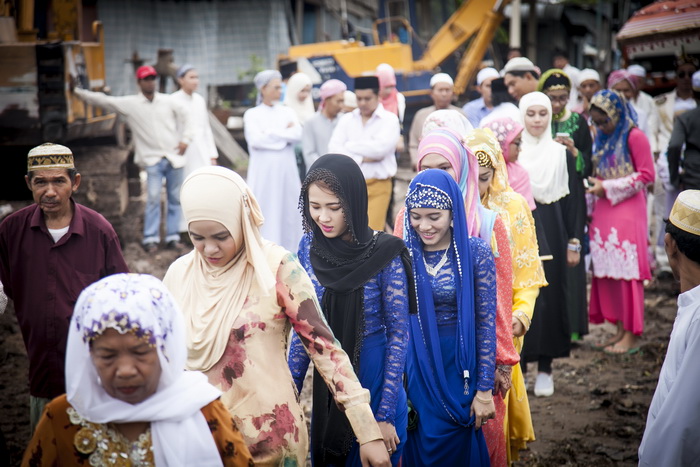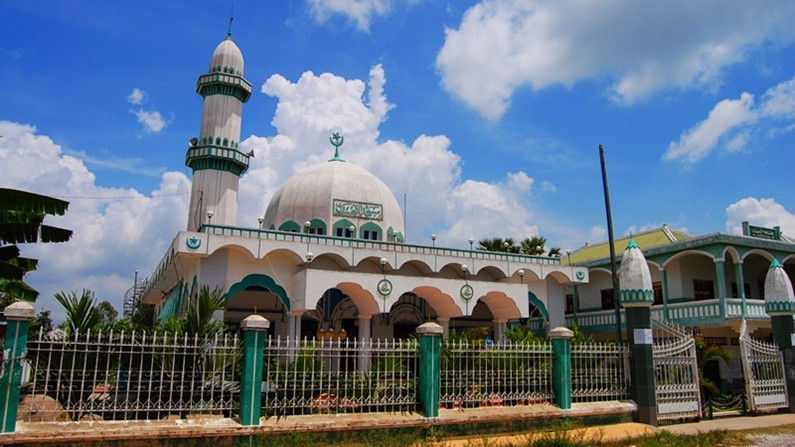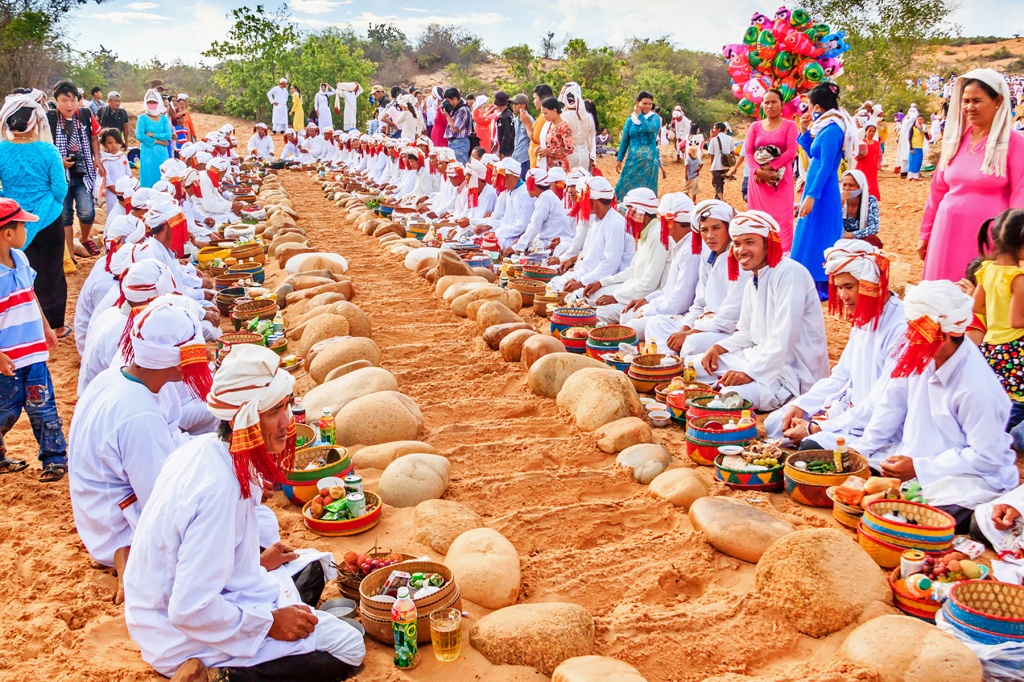The Cham ethnic group is Vietnam's only Muslim ethnic group. Cham people who practice Islam in Central Vietnam are known as “Cham Bani” people, whereas Cham people in the South are Cham Muslims who practice orthodox Islam, as this community still adheres to many of the rituals and regulations of orthodox Islam when compared to their brethren in the Central region. This Cham Island community has shaped Cham culture's identity in the Mekong Delta.

Cham villages in An Giang province are distinguished by wooden stilt houses built on the banks of the Hau River and its tributaries. Dozens of mosques, large and small, stand out with four towers in four corners. Mubarak Mosque is the most well-known mosque in Tan Chau town. Mubarak plays a crucial role in the Cham's spiritual life and religious beliefs, as they must pray towards the mosque's orientation. Every Friday, it is also the site of community activities. Local parishioners assemble at the mosque every Friday to hear dogmas, which instruct them on how to obey religious teachings and rules, observe governmental regulations, and live a healthy civilized life.

One of the unique aspects of Cham culture is its language. The Cham language and script are now taught in almost all mosques. At school, children study the national language during the day. They go to the mosques in the nights to learn how to speak and write in their native tongue.
In the Islamic calendar year, the Cham people of An Giang celebrate three major festivals: the Roja festival, which is a pilgrimage to the Holy Land of La Mecque on the 10th day of the 12th month; Ramadan, also known as the fasting ritual, which lasts from the 1st to the 30th day of the ninth month; and Prophet Muhammad's birthday on the 12th day of the third month.
For Muslims, Ramadan is a holy month. Muslims fast from sunrise to sunset during the yearly religious celebration, which includes no food, water, or anything else forbidden by the Koran. The initiative aims to teach kids about the lives of underprivileged people and the importance of sharing. Whenever the Cham people go or work throughout the holy month of Ramadan, they will endeavor to return home to fulfill religious ceremonies.
After Ramadan ends, the Cham will begin the Roja or Haji festival, a traditional New Year's celebration. After a year of hard work, the people butcher goats and cows to celebrate at mosques. Traditional cultural and artistic activities are also held during this period.
Traditional Cham clothes are one-of-a-kind. Throughout their daily and festival activities, both men and women wear a distinctive clothing called a 'Sarong.' The traditional Muslim cloth hat with embroidery designs adorns the heads of men. Cham women wrap a Matora or Khanh Maom scarf over their heads and then cover their shoulders with it. Cham girls are taught how to prepare traditional cuisines and, in particular, how to embroider and weave brocades from an early age.
Cham males attend five religious services each day in mosques with historic and beautiful architecture. Every day, Cham women work at the loom. The spiritual and cultural aspects of the residents' lives are abundant at festivals. All of above mentioned has contributed to the distinct characteristics of Cham ethnic settlements along the Mekong Delta's riverhead.
----------------------------------
Welcome to Viet Center Tourist | Travel agency in Vietnam
An inbound tour operator specializing in providing tour packages in Vietnam, Laos and Cambodia






Leave your comment here!